Quick filters:
Baluchitherium Stock Photos and Images
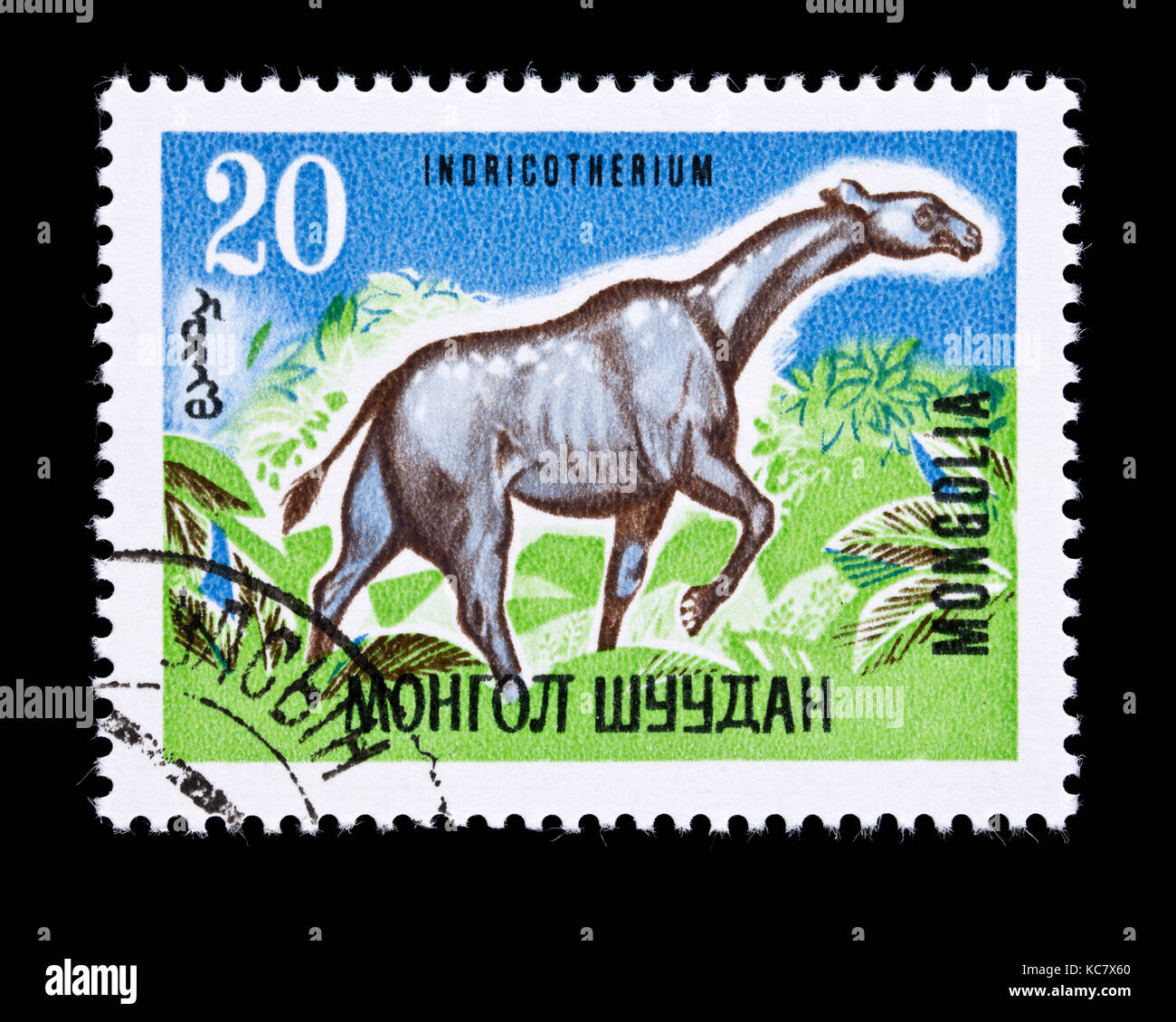 Postage stamp from Mongolia depicting an indricotherium Stock Photohttps://www.alamy.com/image-license-details/?v=1https://www.alamy.com/stock-image-postage-stamp-from-mongolia-depicting-an-indricotherium-162443400.html
Postage stamp from Mongolia depicting an indricotherium Stock Photohttps://www.alamy.com/image-license-details/?v=1https://www.alamy.com/stock-image-postage-stamp-from-mongolia-depicting-an-indricotherium-162443400.htmlRMKC7X60–Postage stamp from Mongolia depicting an indricotherium
 Baluchitherium osborni. Stock Photohttps://www.alamy.com/image-license-details/?v=1https://www.alamy.com/baluchitherium-osborni-image217673293.html
Baluchitherium osborni. Stock Photohttps://www.alamy.com/image-license-details/?v=1https://www.alamy.com/baluchitherium-osborni-image217673293.htmlRMPJ3TE5–Baluchitherium osborni.
 Prehistoric World in Eastern Ontario, Canada, is a multi-acre outdoor attraction that features over 50 life-sized, scientifically accurate models. Stock Photohttps://www.alamy.com/image-license-details/?v=1https://www.alamy.com/prehistoric-world-in-eastern-ontario-canada-is-a-multi-acre-outdoor-attraction-that-features-over-50-life-sized-scientifically-accurate-models-image544029379.html
Prehistoric World in Eastern Ontario, Canada, is a multi-acre outdoor attraction that features over 50 life-sized, scientifically accurate models. Stock Photohttps://www.alamy.com/image-license-details/?v=1https://www.alamy.com/prehistoric-world-in-eastern-ontario-canada-is-a-multi-acre-outdoor-attraction-that-features-over-50-life-sized-scientifically-accurate-models-image544029379.htmlRF2PH2K0K–Prehistoric World in Eastern Ontario, Canada, is a multi-acre outdoor attraction that features over 50 life-sized, scientifically accurate models.
 Baluchitherium osborni Stock Photohttps://www.alamy.com/image-license-details/?v=1https://www.alamy.com/baluchitherium-osborni-image155518555.html
Baluchitherium osborni Stock Photohttps://www.alamy.com/image-license-details/?v=1https://www.alamy.com/baluchitherium-osborni-image155518555.htmlRMK10DE3–Baluchitherium osborni
 Baluchitherium osborni. Stock Photohttps://www.alamy.com/image-license-details/?v=1https://www.alamy.com/baluchitherium-osborni-image632811907.html
Baluchitherium osborni. Stock Photohttps://www.alamy.com/image-license-details/?v=1https://www.alamy.com/baluchitherium-osborni-image632811907.htmlRM2YNF217–Baluchitherium osborni.
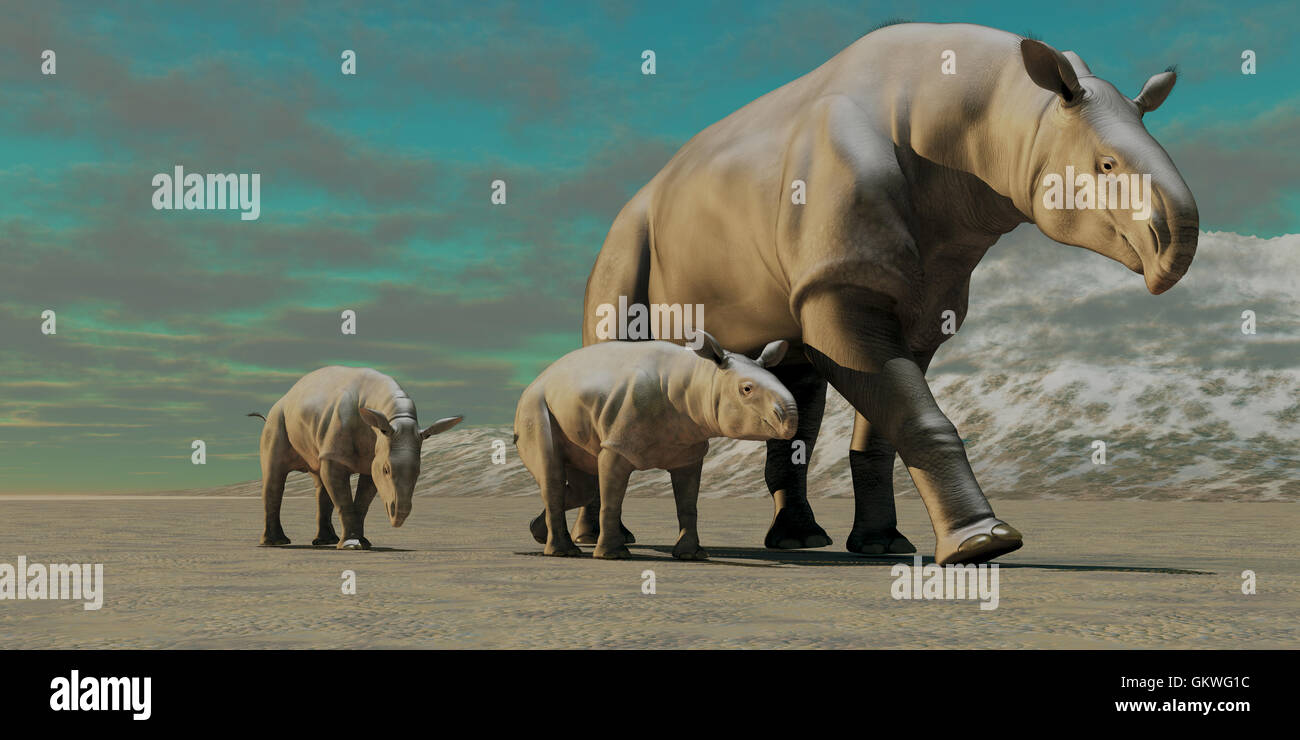 Paraceratherium Stock Photohttps://www.alamy.com/image-license-details/?v=1https://www.alamy.com/stock-photo-paraceratherium-115502056.html
Paraceratherium Stock Photohttps://www.alamy.com/image-license-details/?v=1https://www.alamy.com/stock-photo-paraceratherium-115502056.htmlRFGKWG1C–Paraceratherium
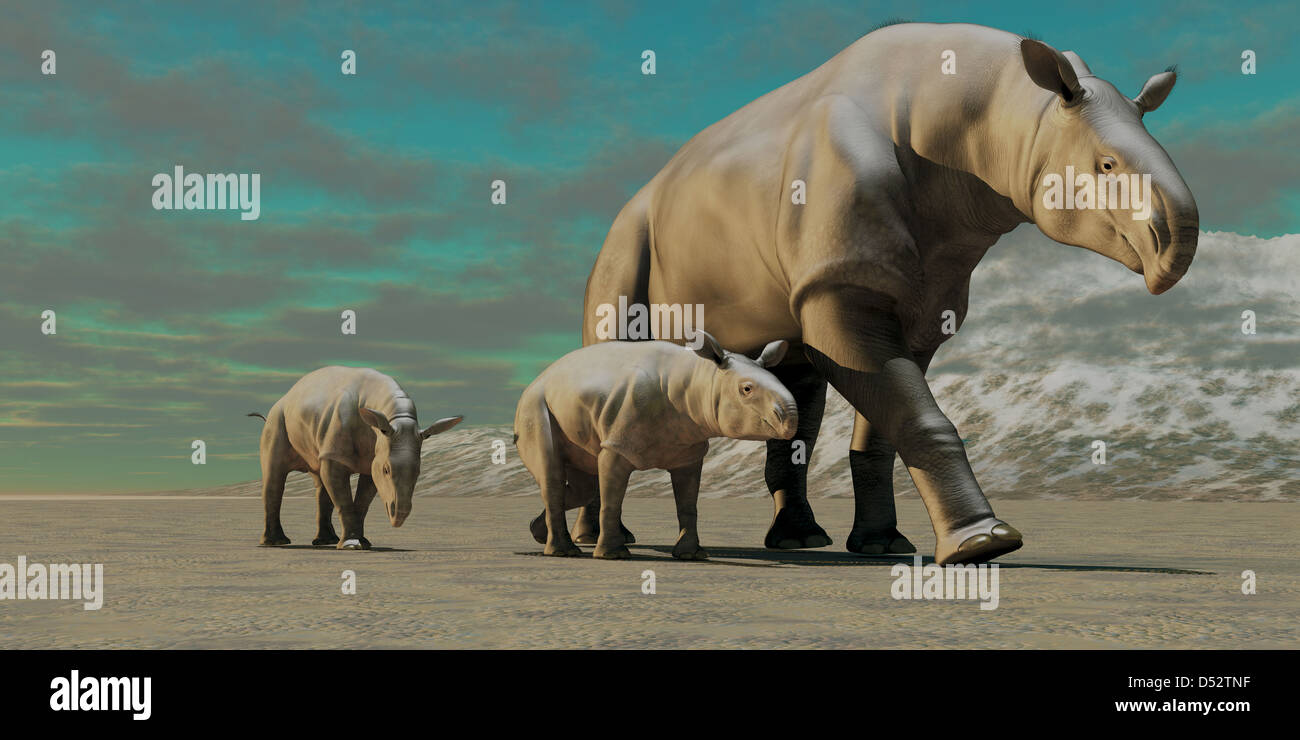 A rhinoceros-like Paraceratherium mother with two twin calves walks along a stony desert in the Oligocene Era. Stock Photohttps://www.alamy.com/image-license-details/?v=1https://www.alamy.com/stock-photo-a-rhinoceros-like-paraceratherium-mother-with-two-twin-calves-walks-54767707.html
A rhinoceros-like Paraceratherium mother with two twin calves walks along a stony desert in the Oligocene Era. Stock Photohttps://www.alamy.com/image-license-details/?v=1https://www.alamy.com/stock-photo-a-rhinoceros-like-paraceratherium-mother-with-two-twin-calves-walks-54767707.htmlRFD52TNF–A rhinoceros-like Paraceratherium mother with two twin calves walks along a stony desert in the Oligocene Era.
 Paraceratherium on White Stock Photohttps://www.alamy.com/image-license-details/?v=1https://www.alamy.com/stock-photo-paraceratherium-on-white-118425610.html
Paraceratherium on White Stock Photohttps://www.alamy.com/image-license-details/?v=1https://www.alamy.com/stock-photo-paraceratherium-on-white-118425610.htmlRFGTJN22–Paraceratherium on White
 Paraceratherium also known as Indricotherium was a genus of gigantic hornless rhinoceros-like animal. Stock Photohttps://www.alamy.com/image-license-details/?v=1https://www.alamy.com/stock-photo-paraceratherium-also-known-as-indricotherium-was-a-genus-of-gigantic-59550122.html
Paraceratherium also known as Indricotherium was a genus of gigantic hornless rhinoceros-like animal. Stock Photohttps://www.alamy.com/image-license-details/?v=1https://www.alamy.com/stock-photo-paraceratherium-also-known-as-indricotherium-was-a-genus-of-gigantic-59550122.htmlRFDCTMP2–Paraceratherium also known as Indricotherium was a genus of gigantic hornless rhinoceros-like animal.
 Years after a devastating forest fire, life returns to feed the largest land mammal known to science, the Paraceratherium (CollectA 2021). Stock Photohttps://www.alamy.com/image-license-details/?v=1https://www.alamy.com/years-after-a-devastating-forest-fire-life-returns-to-feed-the-largest-land-mammal-known-to-science-the-paraceratherium-collecta-2021-image598660019.html
Years after a devastating forest fire, life returns to feed the largest land mammal known to science, the Paraceratherium (CollectA 2021). Stock Photohttps://www.alamy.com/image-license-details/?v=1https://www.alamy.com/years-after-a-devastating-forest-fire-life-returns-to-feed-the-largest-land-mammal-known-to-science-the-paraceratherium-collecta-2021-image598660019.htmlRF2WNY8XY–Years after a devastating forest fire, life returns to feed the largest land mammal known to science, the Paraceratherium (CollectA 2021).
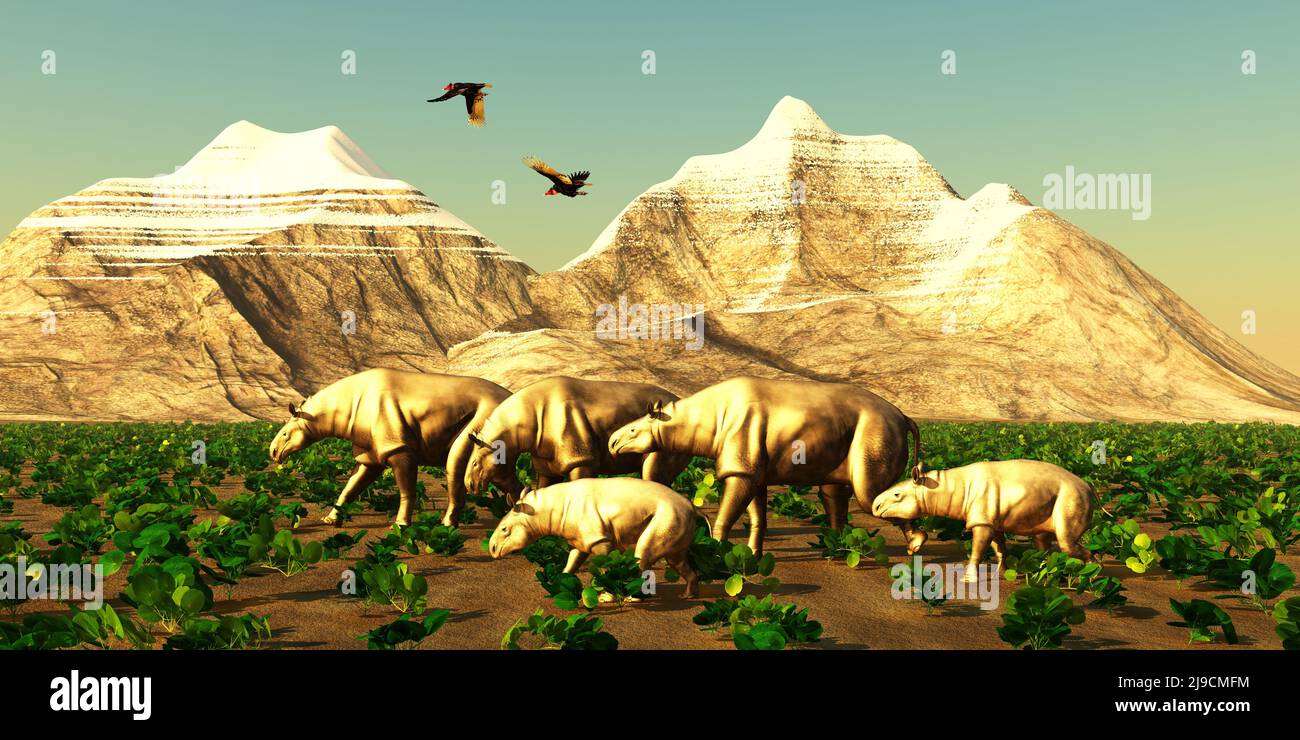 Turkey vultures fly over a herd of Paraceratherium mammals during the Eocene period of China. Stock Photohttps://www.alamy.com/image-license-details/?v=1https://www.alamy.com/turkey-vultures-fly-over-a-herd-of-paraceratherium-mammals-during-the-eocene-period-of-china-image470491384.html
Turkey vultures fly over a herd of Paraceratherium mammals during the Eocene period of China. Stock Photohttps://www.alamy.com/image-license-details/?v=1https://www.alamy.com/turkey-vultures-fly-over-a-herd-of-paraceratherium-mammals-during-the-eocene-period-of-china-image470491384.htmlRF2J9CMFM–Turkey vultures fly over a herd of Paraceratherium mammals during the Eocene period of China.
 MOSCOW, RUSSIA - AUGUST 28, 2020: Postage stamp printed in Vietnam shows Baluchitherium, Fauna (1960) serie, circa 1991 Stock Photohttps://www.alamy.com/image-license-details/?v=1https://www.alamy.com/moscow-russia-august-28-2020-postage-stamp-printed-in-vietnam-shows-baluchitherium-fauna-1960-serie-circa-1991-image388451822.html
MOSCOW, RUSSIA - AUGUST 28, 2020: Postage stamp printed in Vietnam shows Baluchitherium, Fauna (1960) serie, circa 1991 Stock Photohttps://www.alamy.com/image-license-details/?v=1https://www.alamy.com/moscow-russia-august-28-2020-postage-stamp-printed-in-vietnam-shows-baluchitherium-fauna-1960-serie-circa-1991-image388451822.htmlRF2DFYE7A–MOSCOW, RUSSIA - AUGUST 28, 2020: Postage stamp printed in Vietnam shows Baluchitherium, Fauna (1960) serie, circa 1991
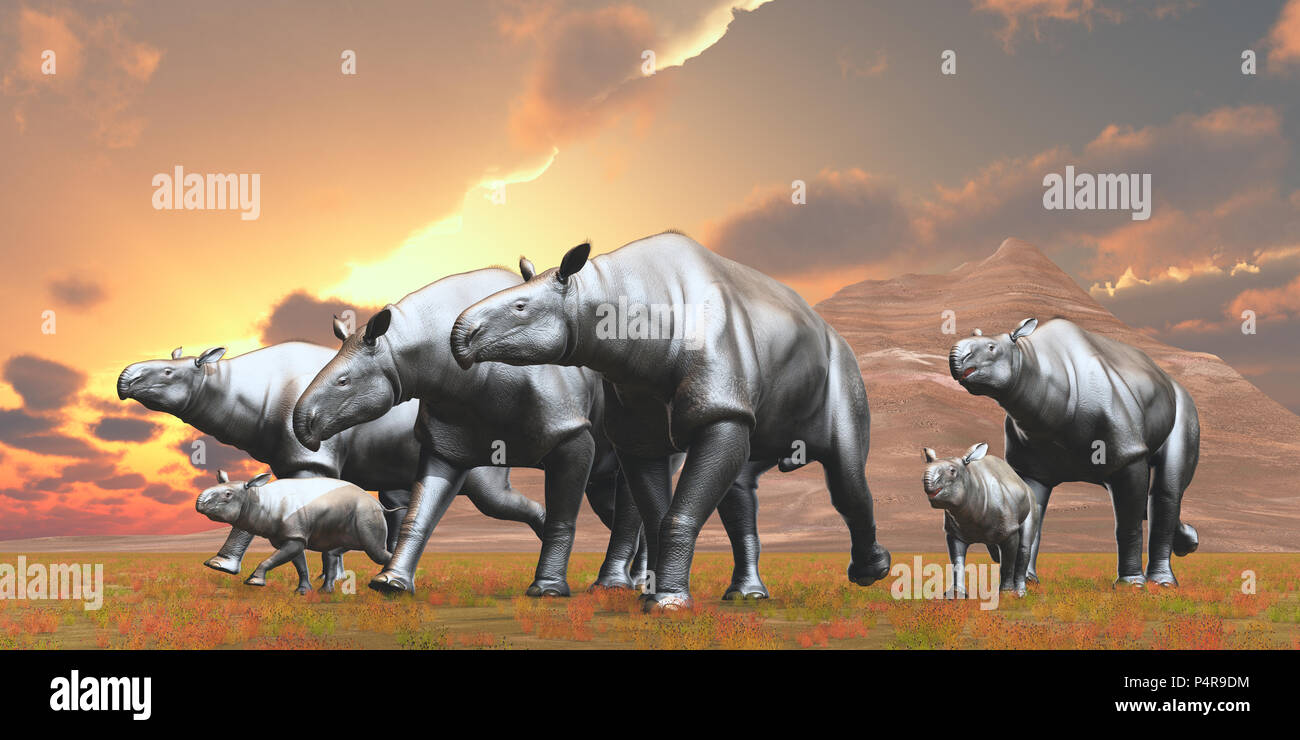 Paraceratherium Herd - Paraceratherium was an Indricotherium herbivore that lived in Eurasia during the Eocene Period. Stock Photohttps://www.alamy.com/image-license-details/?v=1https://www.alamy.com/paraceratherium-herd-paraceratherium-was-an-indricotherium-herbivore-that-lived-in-eurasia-during-the-eocene-period-image209495376.html
Paraceratherium Herd - Paraceratherium was an Indricotherium herbivore that lived in Eurasia during the Eocene Period. Stock Photohttps://www.alamy.com/image-license-details/?v=1https://www.alamy.com/paraceratherium-herd-paraceratherium-was-an-indricotherium-herbivore-that-lived-in-eurasia-during-the-eocene-period-image209495376.htmlRFP4R9DM–Paraceratherium Herd - Paraceratherium was an Indricotherium herbivore that lived in Eurasia during the Eocene Period.
 P31 186 Baluchitherium Exibit at Dinosaur Museum Port Huron Michigan Stock Photohttps://www.alamy.com/image-license-details/?v=1https://www.alamy.com/stock-photo-p31-186-baluchitherium-exibit-at-dinosaur-museum-port-huron-michigan-10015160.html
P31 186 Baluchitherium Exibit at Dinosaur Museum Port Huron Michigan Stock Photohttps://www.alamy.com/image-license-details/?v=1https://www.alamy.com/stock-photo-p31-186-baluchitherium-exibit-at-dinosaur-museum-port-huron-michigan-10015160.htmlRMA0K5KN–P31 186 Baluchitherium Exibit at Dinosaur Museum Port Huron Michigan
 Two Indricotherium Stock Photohttps://www.alamy.com/image-license-details/?v=1https://www.alamy.com/two-indricotherium-image157629781.html
Two Indricotherium Stock Photohttps://www.alamy.com/image-license-details/?v=1https://www.alamy.com/two-indricotherium-image157629781.htmlRFK4CJB1–Two Indricotherium
 An adult Paraceratherium compared to a modern adult White Rhinoceros. Stock Photohttps://www.alamy.com/image-license-details/?v=1https://www.alamy.com/stock-photo-an-adult-paraceratherium-compared-to-a-modern-adult-white-rhinoceros-53803315.html
An adult Paraceratherium compared to a modern adult White Rhinoceros. Stock Photohttps://www.alamy.com/image-license-details/?v=1https://www.alamy.com/stock-photo-an-adult-paraceratherium-compared-to-a-modern-adult-white-rhinoceros-53803315.htmlRMD3EXJY–An adult Paraceratherium compared to a modern adult White Rhinoceros.
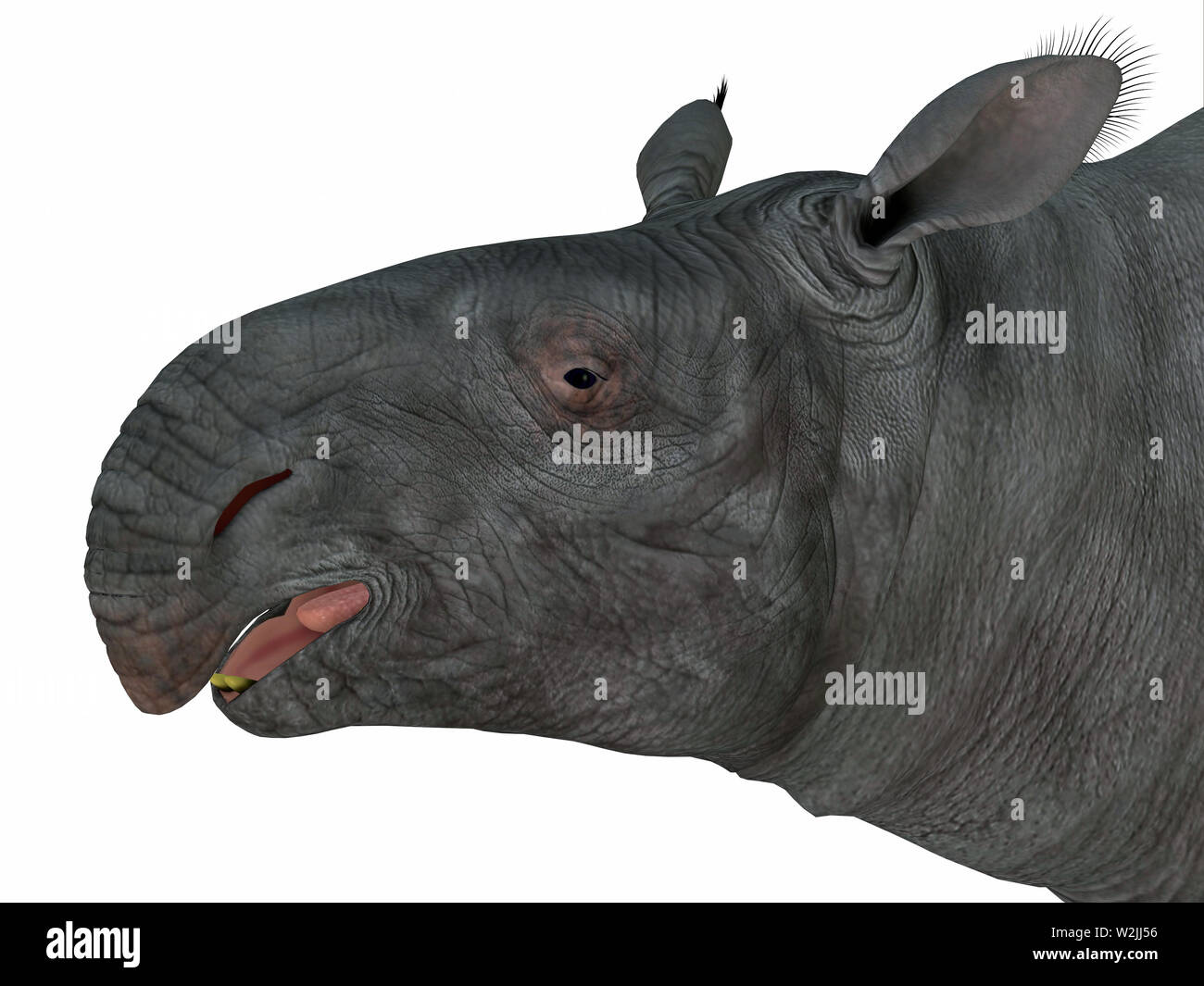 Paraceratherium was a herbivorous mammal that lived in Eurasia during the Eocene and Oligocene Periods. Stock Photohttps://www.alamy.com/image-license-details/?v=1https://www.alamy.com/paraceratherium-was-a-herbivorous-mammal-that-lived-in-eurasia-during-the-eocene-and-oligocene-periods-image259794226.html
Paraceratherium was a herbivorous mammal that lived in Eurasia during the Eocene and Oligocene Periods. Stock Photohttps://www.alamy.com/image-license-details/?v=1https://www.alamy.com/paraceratherium-was-a-herbivorous-mammal-that-lived-in-eurasia-during-the-eocene-and-oligocene-periods-image259794226.htmlRFW2JJ56–Paraceratherium was a herbivorous mammal that lived in Eurasia during the Eocene and Oligocene Periods.
 Paraceratherium on White Stock Photohttps://www.alamy.com/image-license-details/?v=1https://www.alamy.com/paraceratherium-on-white-image227327211.html
Paraceratherium on White Stock Photohttps://www.alamy.com/image-license-details/?v=1https://www.alamy.com/paraceratherium-on-white-image227327211.htmlRFR5RJ4Y–Paraceratherium on White
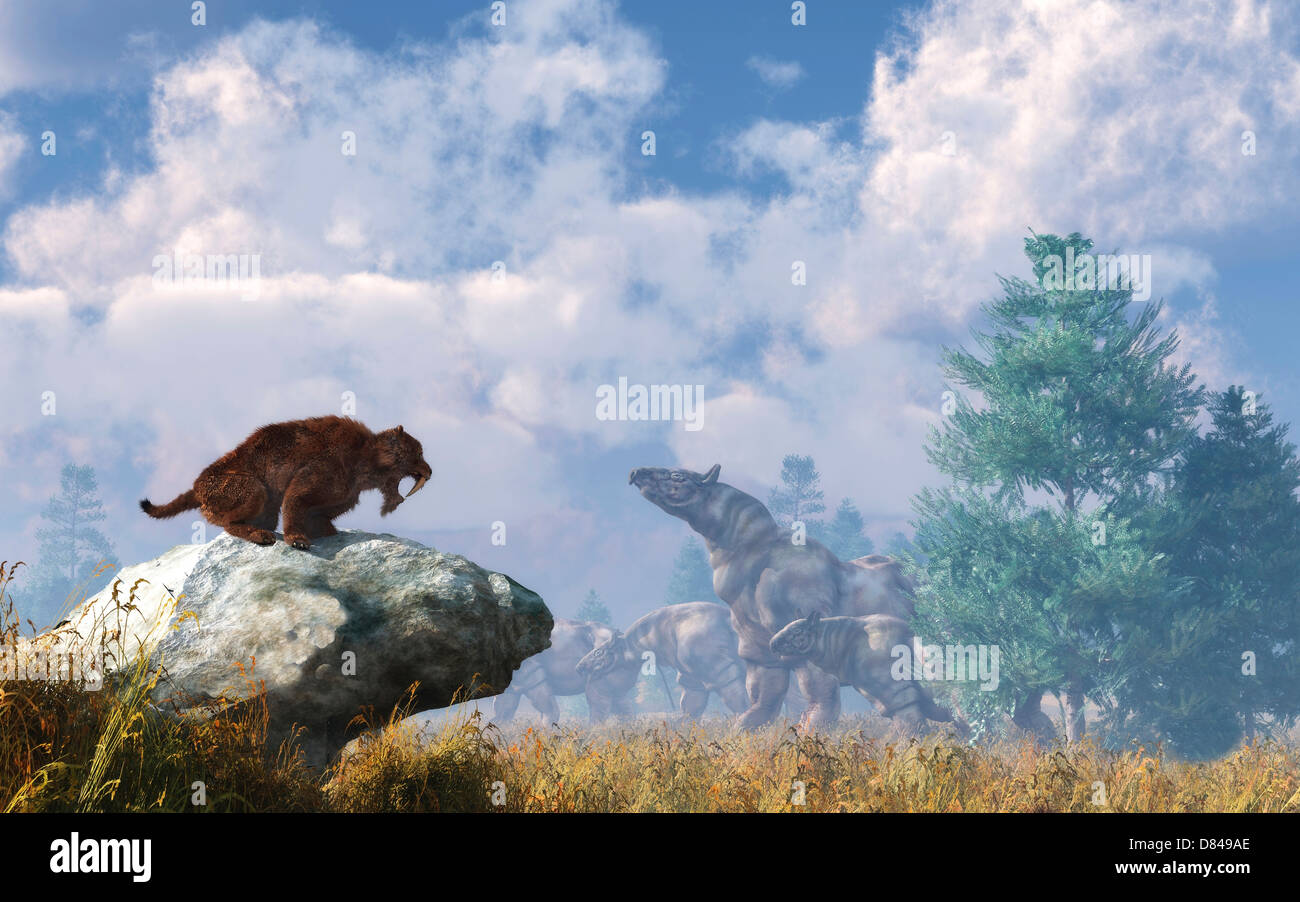 A Eusmilus watches a herd of Paraceratherium. Stock Photohttps://www.alamy.com/image-license-details/?v=1https://www.alamy.com/stock-photo-a-eusmilus-watches-a-herd-of-paraceratherium-56643510.html
A Eusmilus watches a herd of Paraceratherium. Stock Photohttps://www.alamy.com/image-license-details/?v=1https://www.alamy.com/stock-photo-a-eusmilus-watches-a-herd-of-paraceratherium-56643510.htmlRFD849AE–A Eusmilus watches a herd of Paraceratherium.
 POstage stamp from the Soviet Union depicting an extinct Indricotherium Stock Photohttps://www.alamy.com/image-license-details/?v=1https://www.alamy.com/stock-image-postage-stamp-from-the-soviet-union-depicting-an-extinct-indricotherium-162444825.html
POstage stamp from the Soviet Union depicting an extinct Indricotherium Stock Photohttps://www.alamy.com/image-license-details/?v=1https://www.alamy.com/stock-image-postage-stamp-from-the-soviet-union-depicting-an-extinct-indricotherium-162444825.htmlRMKC800W–POstage stamp from the Soviet Union depicting an extinct Indricotherium
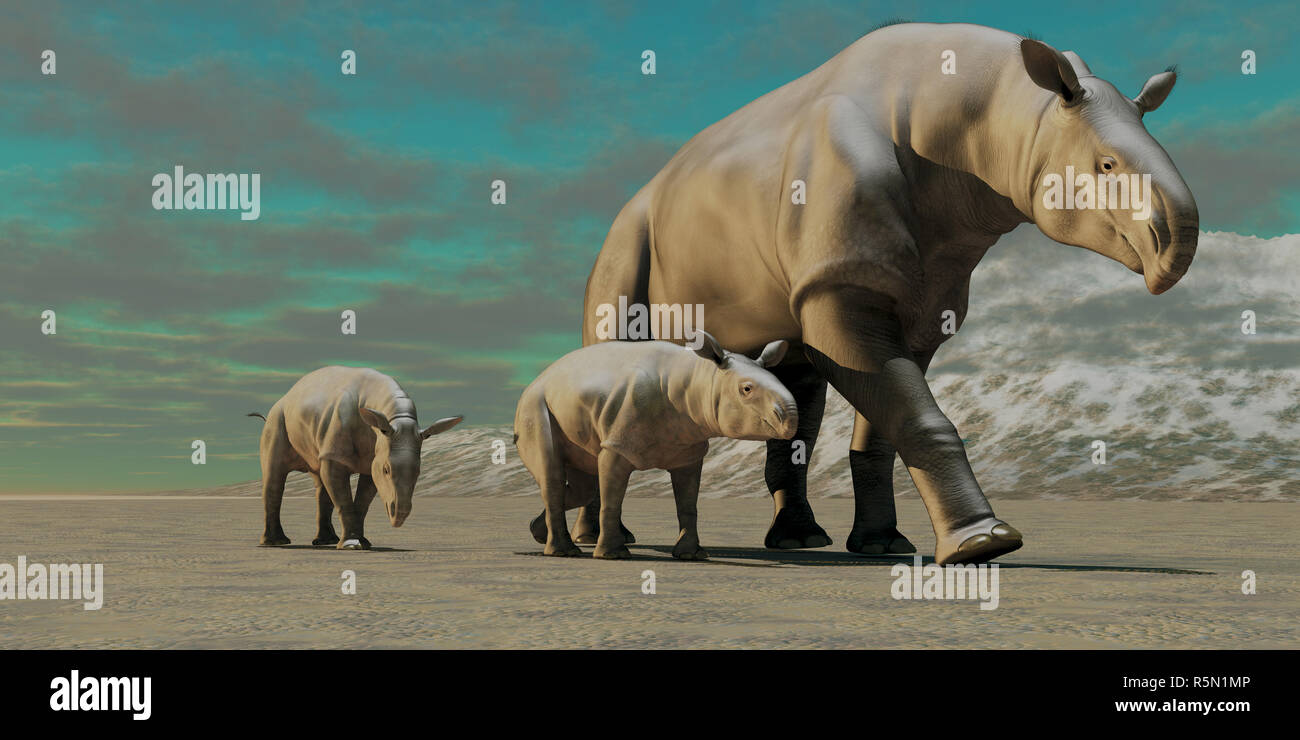 Paraceratherium Stock Photohttps://www.alamy.com/image-license-details/?v=1https://www.alamy.com/paraceratherium-image227270422.html
Paraceratherium Stock Photohttps://www.alamy.com/image-license-details/?v=1https://www.alamy.com/paraceratherium-image227270422.htmlRFR5N1MP–Paraceratherium
![. Central Asiatic Expeditions of the American Museum of Natural History, under the leadership of Roy Chapman Andrews : preliminary contributions in geology, palaeontology, and zoology. Central Asiatic Expeditions (1921-1930); Scientific expeditions; Natural history; Scientific expeditions; Natural history. 1923] BALUCHITHERIUM GRANGERI humerus was found a quarter of a mile distant from the type and may or may not belong to the same individual, but probably to another indi- vidual. The American Museum catalo'gue references to the three speci- mens are as follows: Amer. Mus. 18652 Third Asiatic Stock Photo . Central Asiatic Expeditions of the American Museum of Natural History, under the leadership of Roy Chapman Andrews : preliminary contributions in geology, palaeontology, and zoology. Central Asiatic Expeditions (1921-1930); Scientific expeditions; Natural history; Scientific expeditions; Natural history. 1923] BALUCHITHERIUM GRANGERI humerus was found a quarter of a mile distant from the type and may or may not belong to the same individual, but probably to another indi- vidual. The American Museum catalo'gue references to the three speci- mens are as follows: Amer. Mus. 18652 Third Asiatic Stock Photo](https://c8.alamy.com/comp/RJD1WE/central-asiatic-expeditions-of-the-american-museum-of-natural-history-under-the-leadership-of-roy-chapman-andrews-preliminary-contributions-in-geology-palaeontology-and-zoology-central-asiatic-expeditions-1921-1930-scientific-expeditions-natural-history-scientific-expeditions-natural-history-1923-baluchitherium-grangeri-humerus-was-found-a-quarter-of-a-mile-distant-from-the-type-and-may-or-may-not-belong-to-the-same-individual-but-probably-to-another-indi-vidual-the-american-museum-catalogue-references-to-the-three-speci-mens-are-as-follows-amer-mus-18652-third-asiatic-RJD1WE.jpg) . Central Asiatic Expeditions of the American Museum of Natural History, under the leadership of Roy Chapman Andrews : preliminary contributions in geology, palaeontology, and zoology. Central Asiatic Expeditions (1921-1930); Scientific expeditions; Natural history; Scientific expeditions; Natural history. 1923] BALUCHITHERIUM GRANGERI humerus was found a quarter of a mile distant from the type and may or may not belong to the same individual, but probably to another indi- vidual. The American Museum catalo'gue references to the three speci- mens are as follows: Amer. Mus. 18652 Third Asiatic Stock Photohttps://www.alamy.com/image-license-details/?v=1https://www.alamy.com/central-asiatic-expeditions-of-the-american-museum-of-natural-history-under-the-leadership-of-roy-chapman-andrews-preliminary-contributions-in-geology-palaeontology-and-zoology-central-asiatic-expeditions-1921-1930-scientific-expeditions-natural-history-scientific-expeditions-natural-history-1923-baluchitherium-grangeri-humerus-was-found-a-quarter-of-a-mile-distant-from-the-type-and-may-or-may-not-belong-to-the-same-individual-but-probably-to-another-indi-vidual-the-american-museum-catalogue-references-to-the-three-speci-mens-are-as-follows-amer-mus-18652-third-asiatic-image235085466.html
. Central Asiatic Expeditions of the American Museum of Natural History, under the leadership of Roy Chapman Andrews : preliminary contributions in geology, palaeontology, and zoology. Central Asiatic Expeditions (1921-1930); Scientific expeditions; Natural history; Scientific expeditions; Natural history. 1923] BALUCHITHERIUM GRANGERI humerus was found a quarter of a mile distant from the type and may or may not belong to the same individual, but probably to another indi- vidual. The American Museum catalo'gue references to the three speci- mens are as follows: Amer. Mus. 18652 Third Asiatic Stock Photohttps://www.alamy.com/image-license-details/?v=1https://www.alamy.com/central-asiatic-expeditions-of-the-american-museum-of-natural-history-under-the-leadership-of-roy-chapman-andrews-preliminary-contributions-in-geology-palaeontology-and-zoology-central-asiatic-expeditions-1921-1930-scientific-expeditions-natural-history-scientific-expeditions-natural-history-1923-baluchitherium-grangeri-humerus-was-found-a-quarter-of-a-mile-distant-from-the-type-and-may-or-may-not-belong-to-the-same-individual-but-probably-to-another-indi-vidual-the-american-museum-catalogue-references-to-the-three-speci-mens-are-as-follows-amer-mus-18652-third-asiatic-image235085466.htmlRMRJD1WE–. Central Asiatic Expeditions of the American Museum of Natural History, under the leadership of Roy Chapman Andrews : preliminary contributions in geology, palaeontology, and zoology. Central Asiatic Expeditions (1921-1930); Scientific expeditions; Natural history; Scientific expeditions; Natural history. 1923] BALUCHITHERIUM GRANGERI humerus was found a quarter of a mile distant from the type and may or may not belong to the same individual, but probably to another indi- vidual. The American Museum catalo'gue references to the three speci- mens are as follows: Amer. Mus. 18652 Third Asiatic
 Paraceratherium on a Walk Stock Photohttps://www.alamy.com/image-license-details/?v=1https://www.alamy.com/paraceratherium-on-a-walk-image483640661.html
Paraceratherium on a Walk Stock Photohttps://www.alamy.com/image-license-details/?v=1https://www.alamy.com/paraceratherium-on-a-walk-image483640661.htmlRF2K2RMGN–Paraceratherium on a Walk
 Baluchitherium osborni. Stock Photohttps://www.alamy.com/image-license-details/?v=1https://www.alamy.com/baluchitherium-osborni-image595604890.html
Baluchitherium osborni. Stock Photohttps://www.alamy.com/image-license-details/?v=1https://www.alamy.com/baluchitherium-osborni-image595604890.htmlRM2WH0436–Baluchitherium osborni.
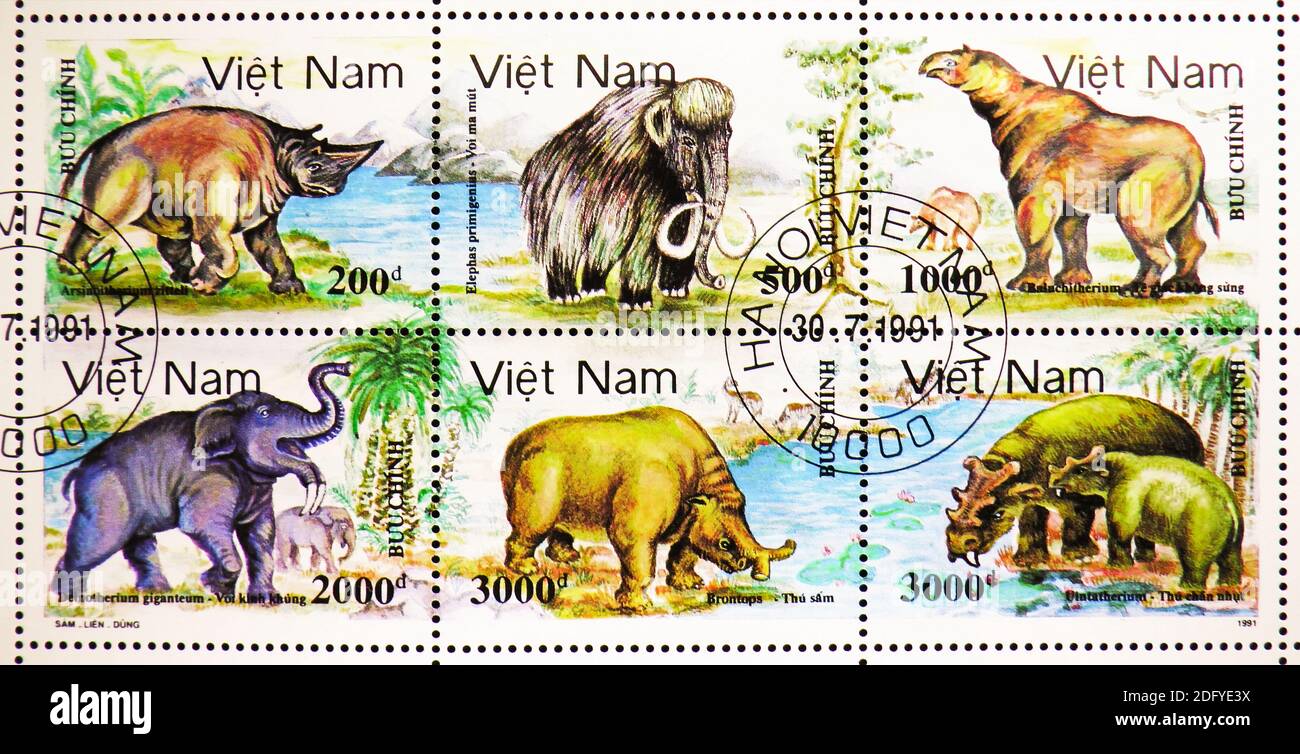 MOSCOW, RUSSIA - AUGUST 28, 2020: Six postage stamps printed in Vietnam from Fauna (1960) serie, circa 1991 Stock Photohttps://www.alamy.com/image-license-details/?v=1https://www.alamy.com/moscow-russia-august-28-2020-six-postage-stamps-printed-in-vietnam-from-fauna-1960-serie-circa-1991-image388451726.html
MOSCOW, RUSSIA - AUGUST 28, 2020: Six postage stamps printed in Vietnam from Fauna (1960) serie, circa 1991 Stock Photohttps://www.alamy.com/image-license-details/?v=1https://www.alamy.com/moscow-russia-august-28-2020-six-postage-stamps-printed-in-vietnam-from-fauna-1960-serie-circa-1991-image388451726.htmlRF2DFYE3X–MOSCOW, RUSSIA - AUGUST 28, 2020: Six postage stamps printed in Vietnam from Fauna (1960) serie, circa 1991
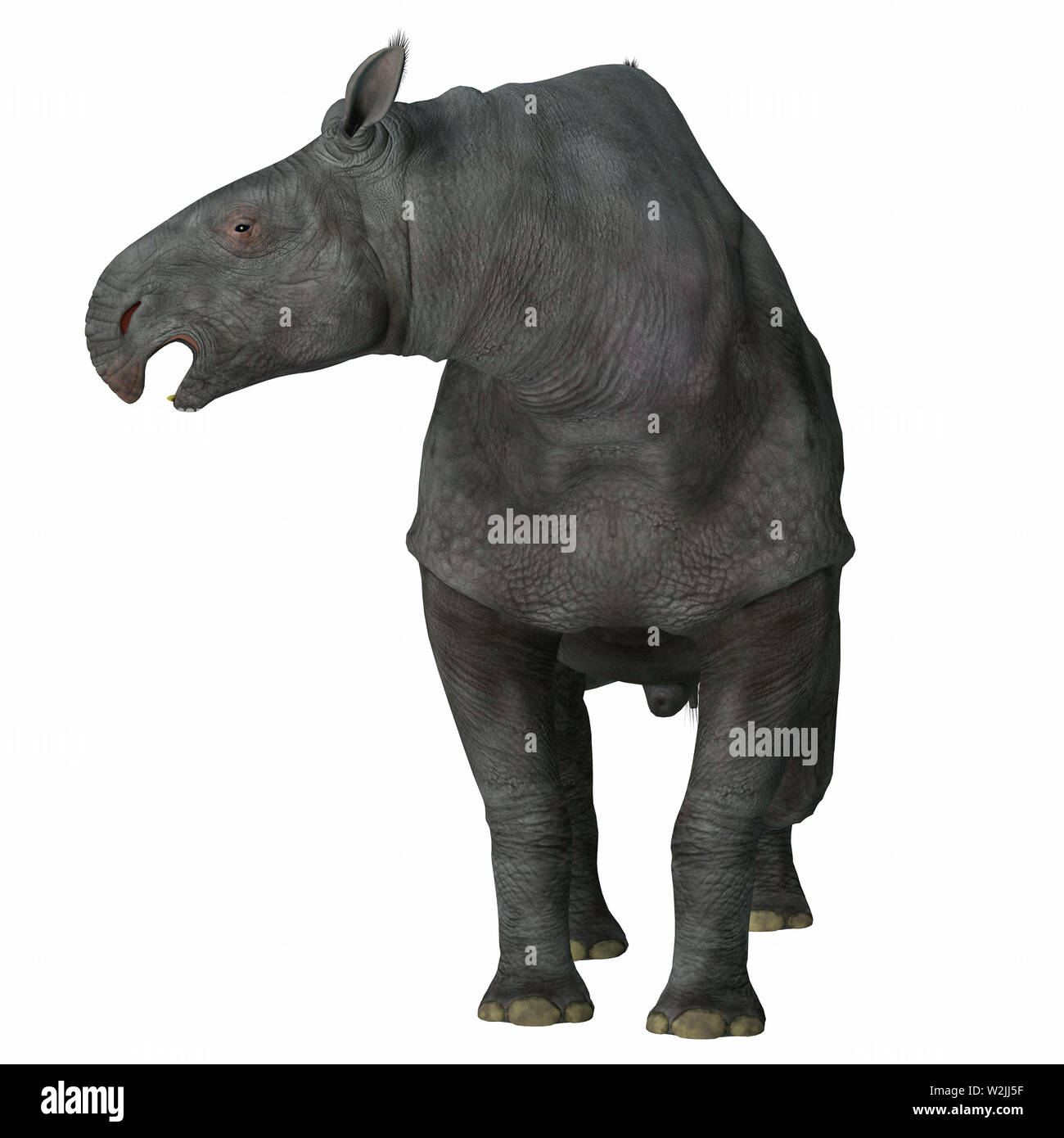 Paraceratherium was a herbivorous mammal that lived in Eurasia during the Eocene and Oligocene Periods. Stock Photohttps://www.alamy.com/image-license-details/?v=1https://www.alamy.com/paraceratherium-was-a-herbivorous-mammal-that-lived-in-eurasia-during-the-eocene-and-oligocene-periods-image259794235.html
Paraceratherium was a herbivorous mammal that lived in Eurasia during the Eocene and Oligocene Periods. Stock Photohttps://www.alamy.com/image-license-details/?v=1https://www.alamy.com/paraceratherium-was-a-herbivorous-mammal-that-lived-in-eurasia-during-the-eocene-and-oligocene-periods-image259794235.htmlRFW2JJ5F–Paraceratherium was a herbivorous mammal that lived in Eurasia during the Eocene and Oligocene Periods.
 . Central Asiatic Expeditions of the American Museum of Natural History, under the leadership of Roy Chapman Andrews : preliminary contributions in geology, palaeontology, and zoology. Central Asiatic Expeditions (1921-1930); Scientific expeditions; Natural history; Scientific expeditions; Natural history. 8 AMERICAN MUSEUM NOVITATES [No. 78 Specific Dental Characters op Baluchitherium grangeri.—Pre- molar crests retarded in development: First premolar a small simple tooth. Second premolar, small, protoloph distinct; also with lai'ge postero-internal tetartocone and rudimentary metaloph. Third Stock Photohttps://www.alamy.com/image-license-details/?v=1https://www.alamy.com/central-asiatic-expeditions-of-the-american-museum-of-natural-history-under-the-leadership-of-roy-chapman-andrews-preliminary-contributions-in-geology-palaeontology-and-zoology-central-asiatic-expeditions-1921-1930-scientific-expeditions-natural-history-scientific-expeditions-natural-history-8-american-museum-novitates-no-78-specific-dental-characters-op-baluchitherium-grangeripre-molar-crests-retarded-in-development-first-premolar-a-small-simple-tooth-second-premolar-small-protoloph-distinct-also-with-laige-postero-internal-tetartocone-and-rudimentary-metaloph-third-image235085435.html
. Central Asiatic Expeditions of the American Museum of Natural History, under the leadership of Roy Chapman Andrews : preliminary contributions in geology, palaeontology, and zoology. Central Asiatic Expeditions (1921-1930); Scientific expeditions; Natural history; Scientific expeditions; Natural history. 8 AMERICAN MUSEUM NOVITATES [No. 78 Specific Dental Characters op Baluchitherium grangeri.—Pre- molar crests retarded in development: First premolar a small simple tooth. Second premolar, small, protoloph distinct; also with lai'ge postero-internal tetartocone and rudimentary metaloph. Third Stock Photohttps://www.alamy.com/image-license-details/?v=1https://www.alamy.com/central-asiatic-expeditions-of-the-american-museum-of-natural-history-under-the-leadership-of-roy-chapman-andrews-preliminary-contributions-in-geology-palaeontology-and-zoology-central-asiatic-expeditions-1921-1930-scientific-expeditions-natural-history-scientific-expeditions-natural-history-8-american-museum-novitates-no-78-specific-dental-characters-op-baluchitherium-grangeripre-molar-crests-retarded-in-development-first-premolar-a-small-simple-tooth-second-premolar-small-protoloph-distinct-also-with-laige-postero-internal-tetartocone-and-rudimentary-metaloph-third-image235085435.htmlRMRJD1TB–. Central Asiatic Expeditions of the American Museum of Natural History, under the leadership of Roy Chapman Andrews : preliminary contributions in geology, palaeontology, and zoology. Central Asiatic Expeditions (1921-1930); Scientific expeditions; Natural history; Scientific expeditions; Natural history. 8 AMERICAN MUSEUM NOVITATES [No. 78 Specific Dental Characters op Baluchitherium grangeri.—Pre- molar crests retarded in development: First premolar a small simple tooth. Second premolar, small, protoloph distinct; also with lai'ge postero-internal tetartocone and rudimentary metaloph. Third
 Paraceratherium was a herbivorous mammal that lived in Eurasia during the Eocene and Oligocene Periods. Stock Photohttps://www.alamy.com/image-license-details/?v=1https://www.alamy.com/paraceratherium-was-a-herbivorous-mammal-that-lived-in-eurasia-during-the-eocene-and-oligocene-periods-image259794243.html
Paraceratherium was a herbivorous mammal that lived in Eurasia during the Eocene and Oligocene Periods. Stock Photohttps://www.alamy.com/image-license-details/?v=1https://www.alamy.com/paraceratherium-was-a-herbivorous-mammal-that-lived-in-eurasia-during-the-eocene-and-oligocene-periods-image259794243.htmlRFW2JJ5R–Paraceratherium was a herbivorous mammal that lived in Eurasia during the Eocene and Oligocene Periods.
 . Central Asiatic Expeditions of the American Museum of Natural History, under the leadership of Roy Chapman Andrews : preliminary contributions in geology, palaeontology, and zoology. Central Asiatic Expeditions (1921-1930); Scientific expeditions; Natural history; Scientific expeditions; Natural history. AMERICAN MUSEUM NOVITATES [No. 148 observed in the former species. The type skull of B. mongoliense indicates an animal little more than half the size of the type skull of B. grangeri, the actual proportions being clearly indicated in the following comparative measurements: Baluchitherium Ba Stock Photohttps://www.alamy.com/image-license-details/?v=1https://www.alamy.com/central-asiatic-expeditions-of-the-american-museum-of-natural-history-under-the-leadership-of-roy-chapman-andrews-preliminary-contributions-in-geology-palaeontology-and-zoology-central-asiatic-expeditions-1921-1930-scientific-expeditions-natural-history-scientific-expeditions-natural-history-american-museum-novitates-no-148-observed-in-the-former-species-the-type-skull-of-b-mongoliense-indicates-an-animal-little-more-than-half-the-size-of-the-type-skull-of-b-grangeri-the-actual-proportions-being-clearly-indicated-in-the-following-comparative-measurements-baluchitherium-ba-image235083477.html
. Central Asiatic Expeditions of the American Museum of Natural History, under the leadership of Roy Chapman Andrews : preliminary contributions in geology, palaeontology, and zoology. Central Asiatic Expeditions (1921-1930); Scientific expeditions; Natural history; Scientific expeditions; Natural history. AMERICAN MUSEUM NOVITATES [No. 148 observed in the former species. The type skull of B. mongoliense indicates an animal little more than half the size of the type skull of B. grangeri, the actual proportions being clearly indicated in the following comparative measurements: Baluchitherium Ba Stock Photohttps://www.alamy.com/image-license-details/?v=1https://www.alamy.com/central-asiatic-expeditions-of-the-american-museum-of-natural-history-under-the-leadership-of-roy-chapman-andrews-preliminary-contributions-in-geology-palaeontology-and-zoology-central-asiatic-expeditions-1921-1930-scientific-expeditions-natural-history-scientific-expeditions-natural-history-american-museum-novitates-no-148-observed-in-the-former-species-the-type-skull-of-b-mongoliense-indicates-an-animal-little-more-than-half-the-size-of-the-type-skull-of-b-grangeri-the-actual-proportions-being-clearly-indicated-in-the-following-comparative-measurements-baluchitherium-ba-image235083477.htmlRMRJCYAD–. Central Asiatic Expeditions of the American Museum of Natural History, under the leadership of Roy Chapman Andrews : preliminary contributions in geology, palaeontology, and zoology. Central Asiatic Expeditions (1921-1930); Scientific expeditions; Natural history; Scientific expeditions; Natural history. AMERICAN MUSEUM NOVITATES [No. 148 observed in the former species. The type skull of B. mongoliense indicates an animal little more than half the size of the type skull of B. grangeri, the actual proportions being clearly indicated in the following comparative measurements: Baluchitherium Ba
 . Central Asiatic Expeditions of the American Museum of Natural History, under the leadership of Roy Chapman Andrews : preliminary contributions in geology, palaeontology, and zoology. Central Asiatic Expeditions (1921-1930); Scientific expeditions; Natural history; Scientific expeditions; Natural history. A.M.I9i8Z Fig. 6. Baluchitherium ? lower molar, crown and external views. No. 19182, Honldjin gravels, 1922. Natural size.. Please note that these images are extracted from scanned page images that may have been digitally enhanced for readability - coloration and appearance of these illustra Stock Photohttps://www.alamy.com/image-license-details/?v=1https://www.alamy.com/central-asiatic-expeditions-of-the-american-museum-of-natural-history-under-the-leadership-of-roy-chapman-andrews-preliminary-contributions-in-geology-palaeontology-and-zoology-central-asiatic-expeditions-1921-1930-scientific-expeditions-natural-history-scientific-expeditions-natural-history-ami9i8z-fig-6-baluchitherium-lower-molar-crown-and-external-views-no-19182-honldjin-gravels-1922-natural-size-please-note-that-these-images-are-extracted-from-scanned-page-images-that-may-have-been-digitally-enhanced-for-readability-coloration-and-appearance-of-these-illustra-image235084865.html
. Central Asiatic Expeditions of the American Museum of Natural History, under the leadership of Roy Chapman Andrews : preliminary contributions in geology, palaeontology, and zoology. Central Asiatic Expeditions (1921-1930); Scientific expeditions; Natural history; Scientific expeditions; Natural history. A.M.I9i8Z Fig. 6. Baluchitherium ? lower molar, crown and external views. No. 19182, Honldjin gravels, 1922. Natural size.. Please note that these images are extracted from scanned page images that may have been digitally enhanced for readability - coloration and appearance of these illustra Stock Photohttps://www.alamy.com/image-license-details/?v=1https://www.alamy.com/central-asiatic-expeditions-of-the-american-museum-of-natural-history-under-the-leadership-of-roy-chapman-andrews-preliminary-contributions-in-geology-palaeontology-and-zoology-central-asiatic-expeditions-1921-1930-scientific-expeditions-natural-history-scientific-expeditions-natural-history-ami9i8z-fig-6-baluchitherium-lower-molar-crown-and-external-views-no-19182-honldjin-gravels-1922-natural-size-please-note-that-these-images-are-extracted-from-scanned-page-images-that-may-have-been-digitally-enhanced-for-readability-coloration-and-appearance-of-these-illustra-image235084865.htmlRMRJD141–. Central Asiatic Expeditions of the American Museum of Natural History, under the leadership of Roy Chapman Andrews : preliminary contributions in geology, palaeontology, and zoology. Central Asiatic Expeditions (1921-1930); Scientific expeditions; Natural history; Scientific expeditions; Natural history. A.M.I9i8Z Fig. 6. Baluchitherium ? lower molar, crown and external views. No. 19182, Honldjin gravels, 1922. Natural size.. Please note that these images are extracted from scanned page images that may have been digitally enhanced for readability - coloration and appearance of these illustra
 . Central Asiatic Expeditions of the American Museum of Natural History, under the leadership of Roy Chapman Andrews : preliminary contributions in geology, palaeontology, and zoology. Central Asiatic Expeditions (1921-1930); Scientific expeditions; Natural history; Scientific expeditions; Natural history. AMERICAN MUSEUM NOVITATES [No. 78 Baluchitherium granger!, new species This lemarkable type specimen, named in honor of Walter Granger, head of the palaeontologic division of the Third Asiatic Expedition under Roy Chapman Andrews, was found as indicated in the map (Fig. 1, 4) and described a Stock Photohttps://www.alamy.com/image-license-details/?v=1https://www.alamy.com/central-asiatic-expeditions-of-the-american-museum-of-natural-history-under-the-leadership-of-roy-chapman-andrews-preliminary-contributions-in-geology-palaeontology-and-zoology-central-asiatic-expeditions-1921-1930-scientific-expeditions-natural-history-scientific-expeditions-natural-history-american-museum-novitates-no-78-baluchitherium-granger!-new-species-this-lemarkable-type-specimen-named-in-honor-of-walter-granger-head-of-the-palaeontologic-division-of-the-third-asiatic-expedition-under-roy-chapman-andrews-was-found-as-indicated-in-the-map-fig-1-4-and-described-a-image235085457.html
. Central Asiatic Expeditions of the American Museum of Natural History, under the leadership of Roy Chapman Andrews : preliminary contributions in geology, palaeontology, and zoology. Central Asiatic Expeditions (1921-1930); Scientific expeditions; Natural history; Scientific expeditions; Natural history. AMERICAN MUSEUM NOVITATES [No. 78 Baluchitherium granger!, new species This lemarkable type specimen, named in honor of Walter Granger, head of the palaeontologic division of the Third Asiatic Expedition under Roy Chapman Andrews, was found as indicated in the map (Fig. 1, 4) and described a Stock Photohttps://www.alamy.com/image-license-details/?v=1https://www.alamy.com/central-asiatic-expeditions-of-the-american-museum-of-natural-history-under-the-leadership-of-roy-chapman-andrews-preliminary-contributions-in-geology-palaeontology-and-zoology-central-asiatic-expeditions-1921-1930-scientific-expeditions-natural-history-scientific-expeditions-natural-history-american-museum-novitates-no-78-baluchitherium-granger!-new-species-this-lemarkable-type-specimen-named-in-honor-of-walter-granger-head-of-the-palaeontologic-division-of-the-third-asiatic-expedition-under-roy-chapman-andrews-was-found-as-indicated-in-the-map-fig-1-4-and-described-a-image235085457.htmlRMRJD1W5–. Central Asiatic Expeditions of the American Museum of Natural History, under the leadership of Roy Chapman Andrews : preliminary contributions in geology, palaeontology, and zoology. Central Asiatic Expeditions (1921-1930); Scientific expeditions; Natural history; Scientific expeditions; Natural history. AMERICAN MUSEUM NOVITATES [No. 78 Baluchitherium granger!, new species This lemarkable type specimen, named in honor of Walter Granger, head of the palaeontologic division of the Third Asiatic Expedition under Roy Chapman Andrews, was found as indicated in the map (Fig. 1, 4) and described a
 . Central Asiatic Expeditions of the American Museum of Natural History, under the leadership of Roy Chapman Andrews : preliminary contributions in geology, palaeontology, and zoology. Central Asiatic Expeditions (1921-1930); Scientific expeditions; Natural history; Scientific expeditions; Natural history. Fig. 6. Fig. 7 Fig. 6. Occipital view of: A, Baluchitherium grangeri type; B, Ceratotherium simum, an iinusiially large skull in the American Museum (Amer. Mus. 1142). Both figin-es one-sixteenth natural size. The Baluchitherium occiput is very similar to that of the Oligocene aceratheres of Stock Photohttps://www.alamy.com/image-license-details/?v=1https://www.alamy.com/central-asiatic-expeditions-of-the-american-museum-of-natural-history-under-the-leadership-of-roy-chapman-andrews-preliminary-contributions-in-geology-palaeontology-and-zoology-central-asiatic-expeditions-1921-1930-scientific-expeditions-natural-history-scientific-expeditions-natural-history-fig-6-fig-7-fig-6-occipital-view-of-a-baluchitherium-grangeri-type-b-ceratotherium-simum-an-iinusiially-large-skull-in-the-american-museum-amer-mus-1142-both-figin-es-one-sixteenth-natural-size-the-baluchitherium-occiput-is-very-similar-to-that-of-the-oligocene-aceratheres-of-image235085428.html
. Central Asiatic Expeditions of the American Museum of Natural History, under the leadership of Roy Chapman Andrews : preliminary contributions in geology, palaeontology, and zoology. Central Asiatic Expeditions (1921-1930); Scientific expeditions; Natural history; Scientific expeditions; Natural history. Fig. 6. Fig. 7 Fig. 6. Occipital view of: A, Baluchitherium grangeri type; B, Ceratotherium simum, an iinusiially large skull in the American Museum (Amer. Mus. 1142). Both figin-es one-sixteenth natural size. The Baluchitherium occiput is very similar to that of the Oligocene aceratheres of Stock Photohttps://www.alamy.com/image-license-details/?v=1https://www.alamy.com/central-asiatic-expeditions-of-the-american-museum-of-natural-history-under-the-leadership-of-roy-chapman-andrews-preliminary-contributions-in-geology-palaeontology-and-zoology-central-asiatic-expeditions-1921-1930-scientific-expeditions-natural-history-scientific-expeditions-natural-history-fig-6-fig-7-fig-6-occipital-view-of-a-baluchitherium-grangeri-type-b-ceratotherium-simum-an-iinusiially-large-skull-in-the-american-museum-amer-mus-1142-both-figin-es-one-sixteenth-natural-size-the-baluchitherium-occiput-is-very-similar-to-that-of-the-oligocene-aceratheres-of-image235085428.htmlRMRJD1T4–. Central Asiatic Expeditions of the American Museum of Natural History, under the leadership of Roy Chapman Andrews : preliminary contributions in geology, palaeontology, and zoology. Central Asiatic Expeditions (1921-1930); Scientific expeditions; Natural history; Scientific expeditions; Natural history. Fig. 6. Fig. 7 Fig. 6. Occipital view of: A, Baluchitherium grangeri type; B, Ceratotherium simum, an iinusiially large skull in the American Museum (Amer. Mus. 1142). Both figin-es one-sixteenth natural size. The Baluchitherium occiput is very similar to that of the Oligocene aceratheres of
 . Central Asiatic Expeditions of the American Museum of Natural History, under the leadership of Roy Chapman Andrews : preliminary contributions in geology, palaeontology, and zoology. Central Asiatic Expeditions (1921-1930); Scientific expeditions; Natural history; Scientific expeditions; Natural history. 6 AMERICAN MUSEUM NOVITATES [No. 78 Length over all of Baluchitherium grangeri type, from front of premaxillary symphysis to back of occipital condyles 1286 (4 ft. 3 in.) Greatest zygomatic width, of B. grangeri type, anterior to glenoid fossae 614 (2 it. % in.) Consequently, the zygomatie-c Stock Photohttps://www.alamy.com/image-license-details/?v=1https://www.alamy.com/central-asiatic-expeditions-of-the-american-museum-of-natural-history-under-the-leadership-of-roy-chapman-andrews-preliminary-contributions-in-geology-palaeontology-and-zoology-central-asiatic-expeditions-1921-1930-scientific-expeditions-natural-history-scientific-expeditions-natural-history-6-american-museum-novitates-no-78-length-over-all-of-baluchitherium-grangeri-type-from-front-of-premaxillary-symphysis-to-back-of-occipital-condyles-1286-4-ft-3-in-greatest-zygomatic-width-of-b-grangeri-type-anterior-to-glenoid-fossae-614-2-it-in-consequently-the-zygomatie-c-image235085443.html
. Central Asiatic Expeditions of the American Museum of Natural History, under the leadership of Roy Chapman Andrews : preliminary contributions in geology, palaeontology, and zoology. Central Asiatic Expeditions (1921-1930); Scientific expeditions; Natural history; Scientific expeditions; Natural history. 6 AMERICAN MUSEUM NOVITATES [No. 78 Length over all of Baluchitherium grangeri type, from front of premaxillary symphysis to back of occipital condyles 1286 (4 ft. 3 in.) Greatest zygomatic width, of B. grangeri type, anterior to glenoid fossae 614 (2 it. % in.) Consequently, the zygomatie-c Stock Photohttps://www.alamy.com/image-license-details/?v=1https://www.alamy.com/central-asiatic-expeditions-of-the-american-museum-of-natural-history-under-the-leadership-of-roy-chapman-andrews-preliminary-contributions-in-geology-palaeontology-and-zoology-central-asiatic-expeditions-1921-1930-scientific-expeditions-natural-history-scientific-expeditions-natural-history-6-american-museum-novitates-no-78-length-over-all-of-baluchitherium-grangeri-type-from-front-of-premaxillary-symphysis-to-back-of-occipital-condyles-1286-4-ft-3-in-greatest-zygomatic-width-of-b-grangeri-type-anterior-to-glenoid-fossae-614-2-it-in-consequently-the-zygomatie-c-image235085443.htmlRMRJD1TK–. Central Asiatic Expeditions of the American Museum of Natural History, under the leadership of Roy Chapman Andrews : preliminary contributions in geology, palaeontology, and zoology. Central Asiatic Expeditions (1921-1930); Scientific expeditions; Natural history; Scientific expeditions; Natural history. 6 AMERICAN MUSEUM NOVITATES [No. 78 Length over all of Baluchitherium grangeri type, from front of premaxillary symphysis to back of occipital condyles 1286 (4 ft. 3 in.) Greatest zygomatic width, of B. grangeri type, anterior to glenoid fossae 614 (2 it. % in.) Consequently, the zygomatie-c